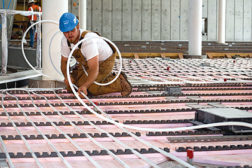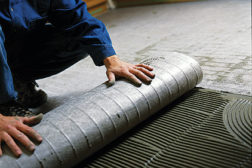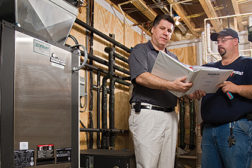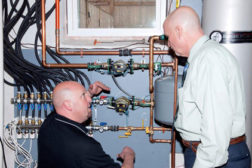Home » radiant heating and cooling
Articles Tagged with ''radiant heating and cooling''
Radiant Gains Popularity in US as Benefits, Comfort Become Known
Read More
Oct. 29, 2014: RPA, IGSHPA Agree to Cross Promote Ground Source Heat Pumps
The Two Organizations Will Collaborate to Develop Education Courses
October 29, 2014
Radiant Market Focuses on Cost, Efficiency
New Products Aim to Speed Installation, Expand Options
Read More
Contractors Share Passion for Hydronic Systems
Experts in Hot Water and Steam Radiate Love for the Trade
Read More
Uponor Enhances Engineering Resources Website
Updated Site Offers an Extensive Library of CAD Details as Well as a Pipe-Sizing Calculator
October 27, 2014
Hydronic Radiant Ceiling Cooling for Smaller Buildings
Though More Expensive, Radiant Trumps Forced Air in Comfort
Read More
New REHAU Website Features Responsive Design
Site Accommodates Multiple Types of Mobile Devices
September 15, 2014
High Pressure Always Goes to Low Pressure
Without a Difference in Pressure, There Can Be No Flow
Read More
Copyright ©2024. All Rights Reserved BNP Media.
Design, CMS, Hosting & Web Development :: ePublishing










